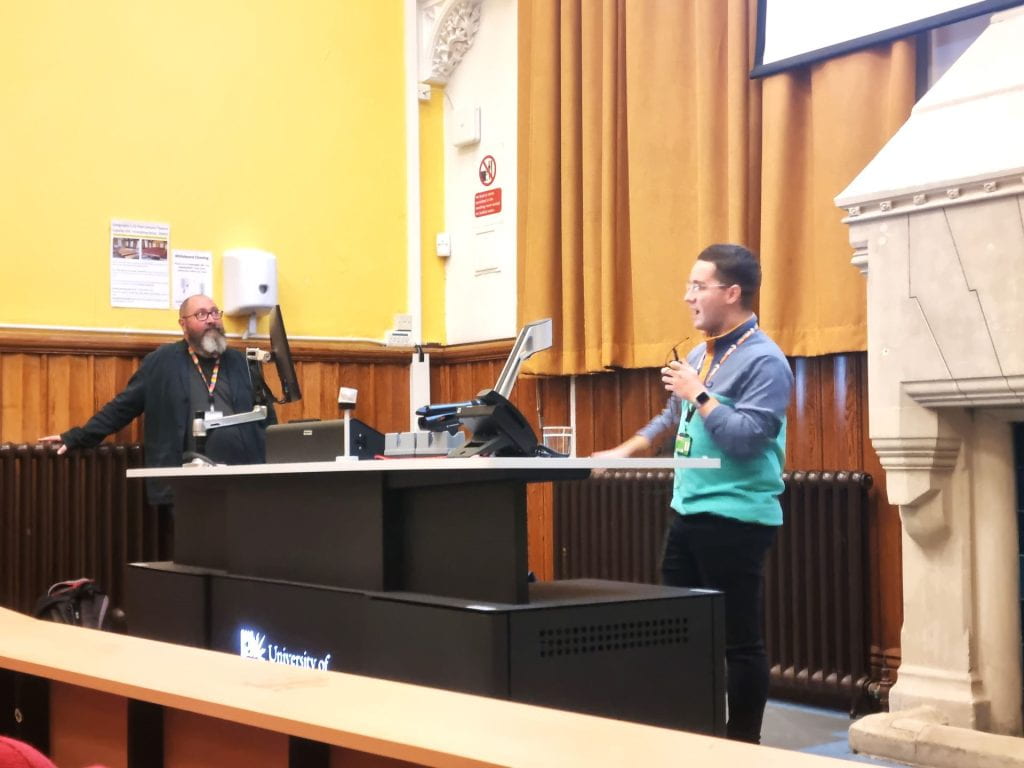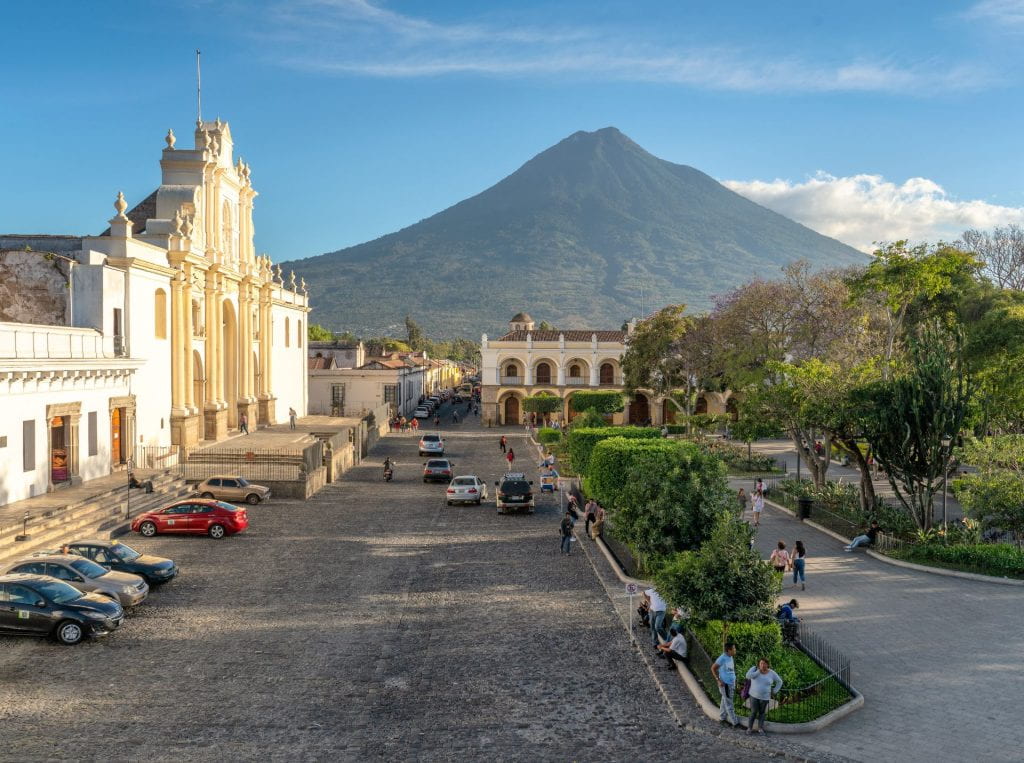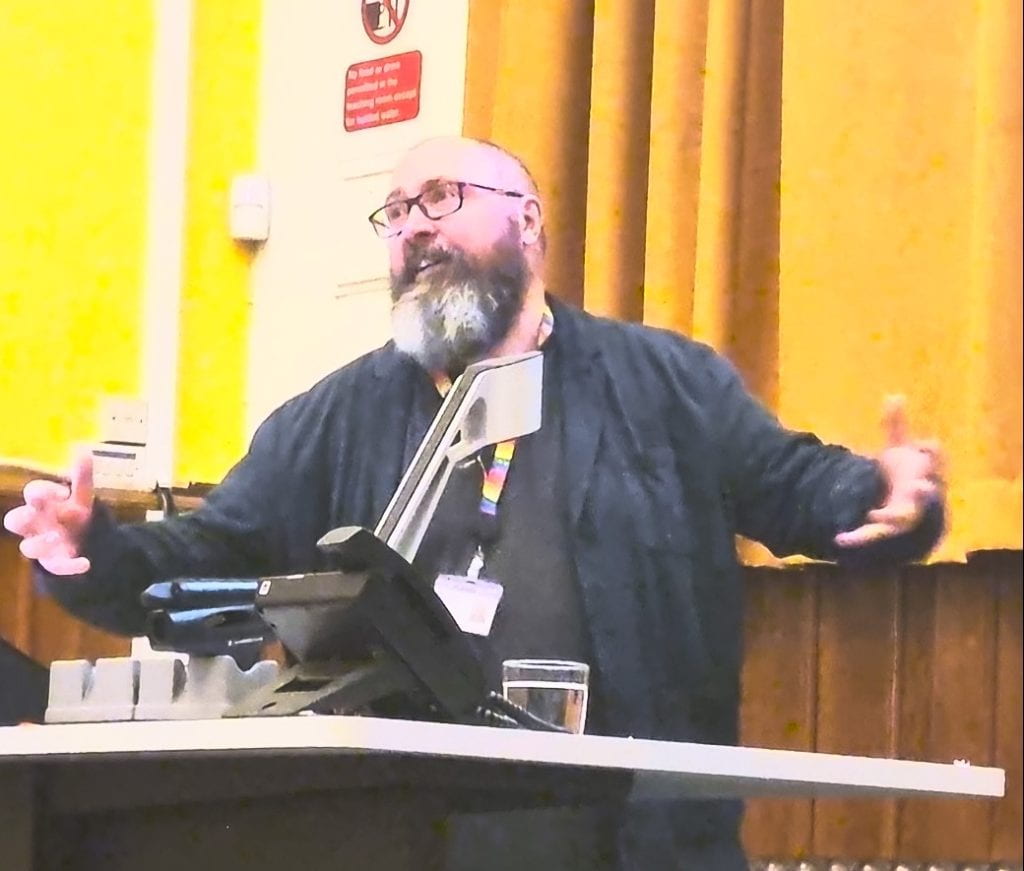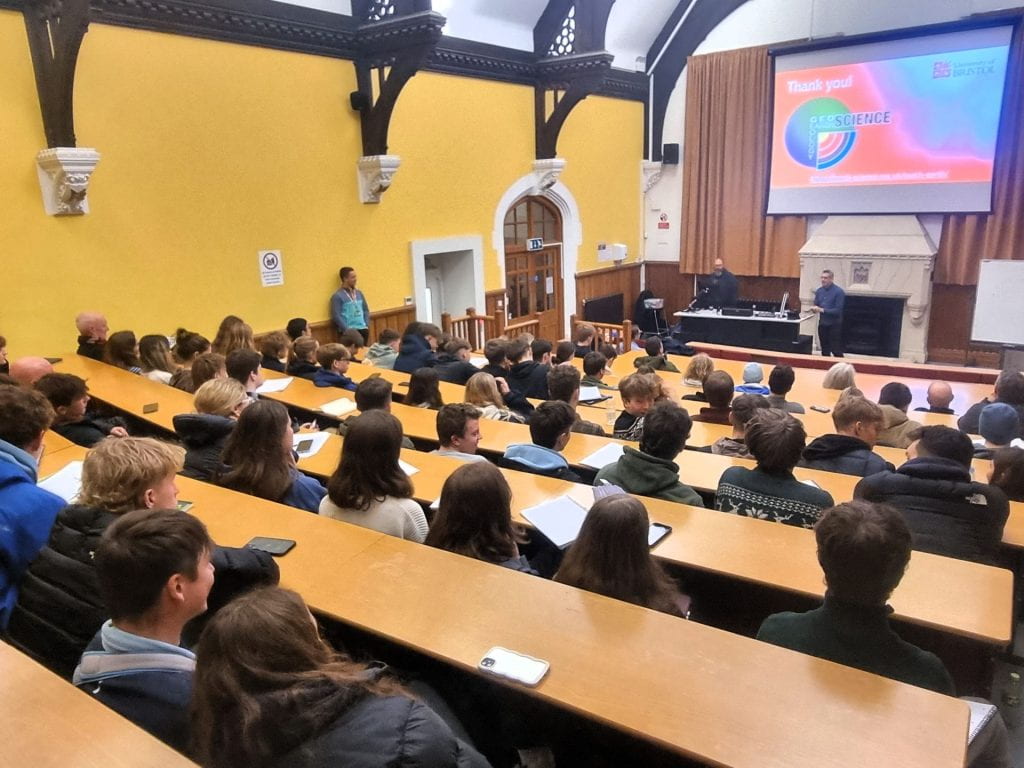Jess Cobbin, SMRT, reports on talk about what we know (and don’t know) about volcanoes
Volcanoes: Knowns and unknowns
Jess Cobbin, St. Mary Redcliffe and Temple School, reports on Dr. Pete Rowley’s lecture on volcanic risk on Dec 5th, 2023
It may have been a dark and cold evening on Tuesday 5th December, but turnout for Dr Pete Rowley’s lecture on uncertainty in assessing volcanic hazards was excellent. While night fell outside, the audience inside the Peel Lecture Theatre at the School of Geographical Sciences, University of Bristol, were being treated to some fascinating and truly eye-opening facts about volcanoes and their unpredictable nature (see slides in Resources).

When it comes to volcanoes, Dr Rowley began by explaining that our knowledge can be divided into following categories, channelling Donald Rumsfeld’s infamous speech from 2002: “the known knowns, the known unknowns, and the unknown unknowns”. He discussed the role these play in assessing our capacity to forecast eruptions and how they may impact a population’s ability to respond in the event of one. It was startling to hear about the high level of uncertainty and the lack of consistency, which is made worse by the scarcity of volcanologists worldwide and the absence of uniform monitoring; there are approximately 100 volcano monitoring centres globally, each with a different capacity, in comparison to 1,500 active volcanoes. Therefore, the ability to forecast volcanic eruptions varies greatly, both between countries and individual volcanoes themselves. In Guatemala, for example, Volcan de Agua (see below) has a population of 250,000 living within 15 km, but no monitoring at all, and in the United States, only 17% of volcanoes classified as posing a very high threat fall into the category of being ‘very well monitored’.

Even in countries that would be considered best equipped to forecast and manage volcanic hazards, there is still uncertainty. Despite the ‘known knowns’, such as how to measure gas emissions and ground deformation, what is really happening at depth and the cause of some seismic signals still remains largely a mystery to volcanologists. We explored the fact that volcanic eruptions do not really show a pattern at all and that growth curves are not predictive of failure points so, even when monitoring does occur, forecasting remains difficult. Even with the use of tiltmeters and GPS mapping, there are still inaccuracies: in fact, between 2001 and 2011, only 47% of volcanoes showing signs of unrest eventually erupted. Dr Rowley made the particularly thought-provoking comment that data collected before volcanic eruptions is only useful retrospectively.

Towards the end of the lecture, we focussed on the unknown unknowns, which Dr Rowley explained are much greater for individual volcanoes. For example, volcanologists may be unaware of the eruptive history of a volcano and therefore lack knowledge about how it is likely to behave in the future. This is also affected by an insufficient understanding of the plumbing system (the network of reservoirs and channels through which magma moves) and a paucity of monitoring, leading to low levels of awareness about how volcanoes are behaving in the current moment. Many intriguing concepts arise from the unknown unknowns, such as whether the mechanisms at all volcanoes are the same and how confident we can be that records are statistically useful.
New information about volcanoes is being discovered constantly, and it seems that the more we learn, the more we realise just how much we don’t already know. For example, in April 2023, over 19,000 undersea volcanoes were discovered in the South Pacific. This reveals the clear need for a higher quantity, and quality, of research to ensure that collective understanding is the best it can be.
Finally, I am sure that I speak for many when I say that I found this lecture fascinating, and it has certainly opened my eyes to the difficulties of monitoring volcanoes and the sheer amount of information we currently lack. I am very grateful to Dr Pete Rowley and the Bristol Branch of the Geographical Association for giving local sixth-form geography students and their teachers the opportunity to expand our knowledge by attending this lecture.

